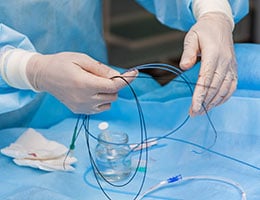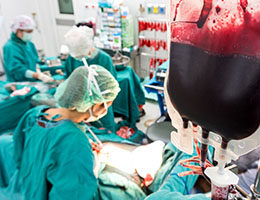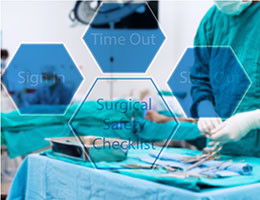Blog & Articles
Mitigating the Consequences of Burnout, Medical Errors, and Liability

In 2019, the World Health Organization categorized burnout as a syndrome resulting from chronic workplace stress that has not been successfully managed. While burnout was a concern before COVID-19, its onset has exacerbated the problem.
According to an ACEP October 2020 poll, 87% of emergency physicians reported feeling more stressed since the start of the pandemic, and 72% reported experiencing more burnout on the job.
On the surface, burnout may be classified as a workforce issue; however, its far-reaching effects can threaten patient safety. In fact, research suggests that physicians experiencing burnout are twice as likely to make a medical error. Burnout should absolutely be considered one of the root causes of medical error.
Case: When Is It More Than Just Back Pain?

History
A 25-year-old man presented to the ED with the chief complaint of low back pain. The pain onset gradually about 10 days prior, days after he lifted some furniture. The pain was described as dull and constant, with an intensity of level 7 out of 10 and getting worse in the past few days. He also had milder pain in the mid-back. Nothing seemed to make the pain better, and movement made the pain somewhat worse. He denied any prior back injury or surgery.
Case: Complicated Angiogram Reveals VEDS Diagnosis

It’s estimated that between 3,000 and 8,000 people in the U.S. have Vascular Ehlers-Danlos Syndrome (VEDS), although many are undiagnosed. Because 50% of those with the condition do not have a family history, the road to diagnosis and expert care can be long. Many individuals with VEDS are not diagnosed until they have a life-threatening event, and 80% of VEDS patients will experience a major medical event by age 40; too many are diagnosed during autopsy.
The likelihood of someone coming into the emergency department unaware of their VEDS diagnosis is high, but a VEDS diagnosis can change the approach to a patient’s emergency and surgical care and outcomes. Therefore, it is critical to be familiar with this condition. Here we present a missed diagnosis case and its impact on the invasive interventions.
Anchoring: Its Role in Diagnostic Error

[8 MIN READ]
Why was the diagnosis really missed?
In my previous position as Manager of Risk, Claims & Insurance for our physician group, the available methods of error analysis never satisfied my quest for the ultimate answer to this recurring question in any given case. The majority of our group practice was emergency medicine; our claims data mirrored the national trends showing that most claims were related to diagnostic error, which contained the allegation that a clinician was negligent by either not making the diagnosis in a timely fashion or failing to make the diagnosis entirely.
Surgical Error Cases

[8 MIN READ]
We are all fallible. Despite their best efforts, physicians, nurses, other healthcare workers, and indeed all humans, make errors. It is an essential component of our being. It is widely accepted that a systems approach to error prevention can counteract this fallibility. Nonetheless, errors do occur. These failures can often be explained by the “Swiss Cheese Model” of error. Multiple processes are designed to prevent a type of error. Each individual process may be imperfect but used in combination one process will succeed where another may fail. Like the holes in Swiss cheese, when these imperfections are aligned and multiple processes fail, errors occur.
Below I present three cases from which we can gain perspective on how poor communication, systems errors, and cognitive bias contribute to surgical errors.

[3 MIN READ]
Apology laws have always been a quandary. I have repeatedly said they make docs feel more comfortable about apology but have little legal value. Most would assume apology laws reduce medial malpractice claims but a study by Stanford Law Review shows that this is not the case. In states with apology laws, non-surgeon physicians saw higher rates of medical malpractice lawsuits and dollars paid out. Defense lawyers should want to use the evidence created in a disclosure process if a case goes to trial.
Case: How to Disclose Medical Errors to a Patient's Family

[3 MIN READ]
Do your clinicians have a plan for how to address a patient’s family if a medical error occurs?
Consider this true case that was shared with me by a California risk manager – a routine test that goes tragically wrong:
"Mrs. Woods is a 53-year old woman who goes to the hospital for a CT-guided biopsy of the liver. The staff assures Mrs. Woods the test is ‘no big deal’ so she tells her husband to go across the street to do some shopping during the test. The clinical team assures Mr. Woods they will call him when the test is complete. Mr. Woods is standing in Macy’s when his cell phone rings … he answers to hear a nurse frantically screaming, 'Come quickly!' Mr. Woods races across the street to the hospital where he learns his wife is dead."
After reading this case in my training programs, I challenged my healthcare audiences with the following:
Surgical Errors

[7 MIN READ]
The care of the surgical patient is dependent upon doctors, nurses, technicians and both office and hospital staff. Like all humans, despite their best efforts, they make mistakes. Encouraging them to “try harder” simply will not work.
To reduce surgical errors we need to identify root causes and institute system-based processes to prevent them.
Studies have suggested specific areas that offer opportunities for improvement. Kim et al.[1] noted that adverse events from surgical intervention are more commonly due to preoperative and/or postoperative errors. These include delay in diagnosis and/or treatment and communication errors between the healthcare team and the patient/family or other members of the healthcare team. Process measures that can address these issues include:
Patient Safety in Clinical Trials

[12 MIN READ]
While the mission of clinical research is to advance the practice of medicine, it is an extremely daunting task to not only manage clinical trials, but to also oversee them to keep patients safe and reduce risk. In a review of numerous malpractice cases related to clinical research, I have found several common denominators and opportunities to improve patient safety.
The issues that arise from clinical trials are not typically intentional; they are simply intrinsic to the complexities of the system. Under the best of circumstances and in many cases by design, patients have significant problems and are randomized to receive a trial drug. This population is inherently at risk. Additionally, many medical professionals are not trained to conduct appropriate, safe, well-organized clinical trials. These factors along with others I will outline have led to an increase in patient injury, federal and legal scrutiny, and obviously, litigation.


